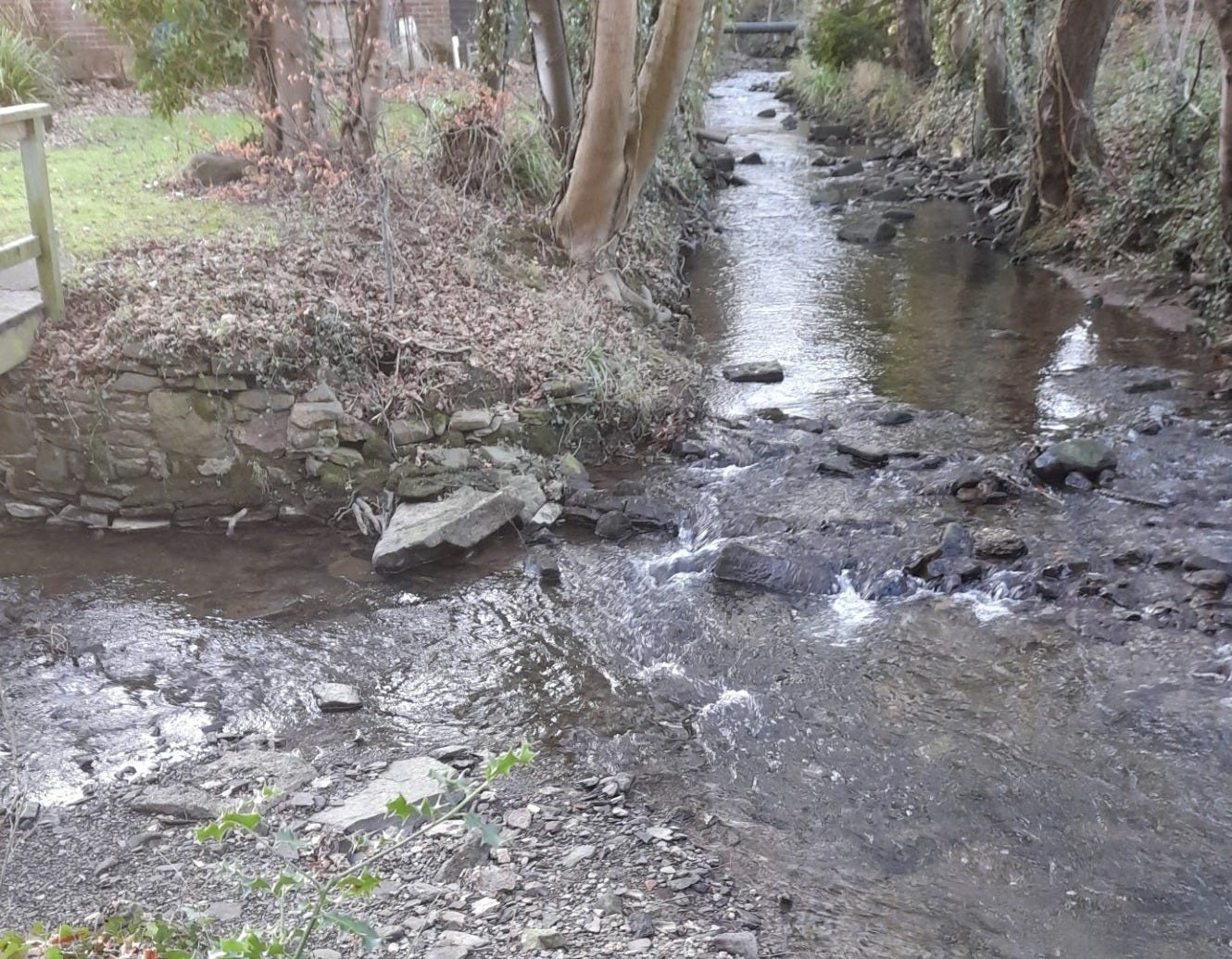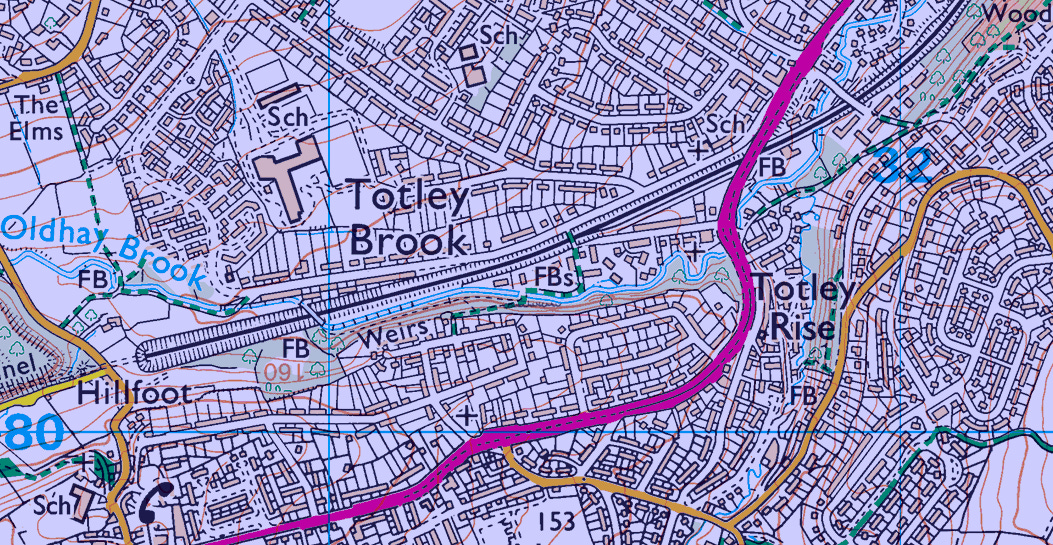(This is a re-post from December 2024 that may be of interest to recent subscribers)
The River Sheaf spends much of its rather short route out of sight of many of us, and for the river that gave the city its name it really isn’t very glamorous on the whole. It is planned to open up a new city centre glimpse of the Sheaf as part of the Sheffield Castle site, but presently it may be the main Sheffield river that people see the least of. The city centre end of the river is the confluence with the River Don alongside Blonk Street, where it exits the ‘Megatron’ storm drain under the station. The other end is the one we are interested in for this story, another confluence, this time of the Totley Brook and the Old Hay Brook, tucked away behind the gardens of houses at the end of Mill Lane in Totley.
Totley Brook (left) and Old Hay Brook forming the River Sheaf
All of which makes these two brooks an important part of the city’s story in their own right. Totley Brook runs through the picturesque Gillfield Woods, an interesting spot looked after by an enthusiastic and knowledgeable friends group, before passing alongside the Shepley Spitfire pub on Mickley Lane. The brook runs behind back gardens to the site of a footbridge on Laverdene Avenue, underneath which there is a former ford which used to take Back Lane across the water, a road name which can still be found on either side of the small valley. Here stood a Chemical Yard into the early 20th century, the fresh running water supply not always having the pleasant sight and smell that it has today.
Totley Brook passing through Totley Rise to meet with the Old Hay Brook
The Old Hay Brook passes underneath Baslow Road, and heading away from its confluence with Totley Brook it runs alongside a steep valley to the left of the railway, but it is then carried across the line in an aqueduct. This was constructed at the same time as the line itself (which opened in 1893). First time I went to take a look I was expecting something simple like a pipe (having only seen it marked on the map), but instead it is a striking Victorian feature seen by few people today. It is hidden away, and only usually visible to a few houses on Totley Brook Road as it crosses the railway. It is also the only current vantage point from which to see the eastern portal of the Totley Tunnel - two fine pieces of late 19th century engineering infrastructure.
The Totley aqueduct carrying the Old Hay Brook over the railway
Further upstream along Old Hay Brook, beyond the end of Totley Brook Road, the route suddenly becomes quite rural in typical Sheffield fashion. There is a further confluence with Needham’s Dyke, a small river which flows through the grounds of Totley Grove, a grand property formerly owned by the pleasingly named Waterfall family. Here a corn mill and scythe maker formerly utilised the brook’s water power. Just beyond there is a filled in dam creating a green space alongside the brook, just before it passes under Totley Bridge, the historic boundary between Dore and Totley.
Needham’s Dyke emerging from Totley Grove
You may have noticed that it is the Old Hay Brook running near Totley Brook Road rather than the Totley Brook. This is a bit of a mystery as the road does appear to be named after the wrong river! It wouldn’t be the first time that a developer has given somewhere a more appealing name, however I’m not sure - Old Hay Brook sounds nice too. Was it just the word ‘Totley’ that someone wanted to make sure was in the name when the area was developed in the late 19th century? The remaining grand houses on that road could tell a story; they were built looking over a pretty brook but within a few decades were looking out at a more developed area and a railway line. They were also originally in Derbyshire, the area only becoming part of Sheffield as recently as 1933.
Returning to the beginning of the River Sheaf, it is an interesting piece of land. These days it is wedged in between the railway, the main road, and the surrounding development, but it too has a water powered industry story. A site that could utilise power from both rivers was a prized one, and it was for a long time the home of the Totley Rolling Mill. The land next to the confluence still bears the remains of the goits (water channels) associated with such work. All of Sheffield’s main rivers tell such stories of past industrial use, which I enjoy, but right on that spot we can also stand on the very place where the Sheaf begins. An important heritage location which is somewhat understated - which is also a very Sheffield thing.







